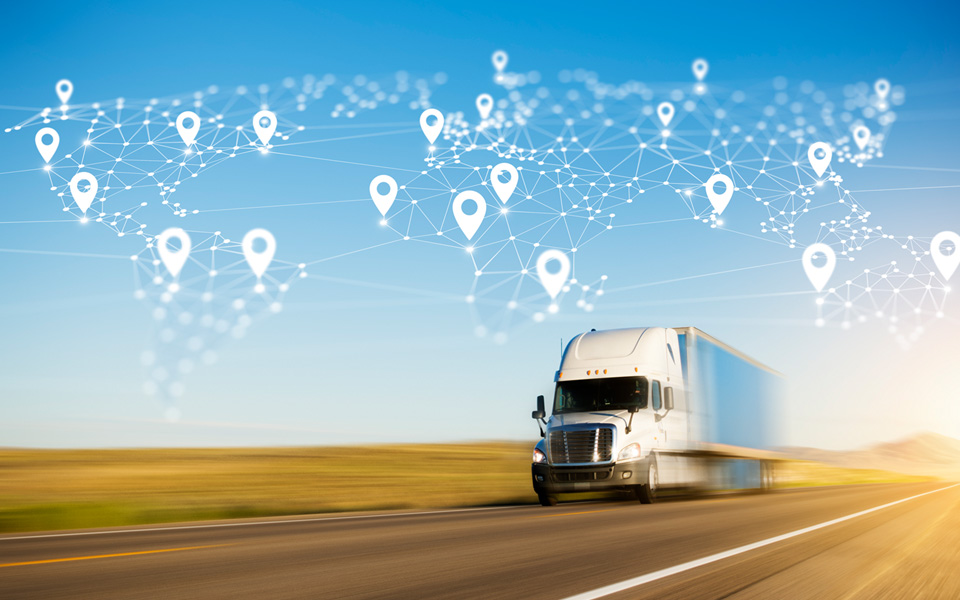Climate study explores the potential for high-ambient CO2 technologies

*On June 1, 2023 Emerson’s Climate Technologies business became a new standalone company – Copeland. Though our name has changed, we are building on more than a century of HVACR innovation and industry leadership, and Copeland continues to offer the same products, industry stewardship, and learning opportunities you’ve grown to trust. Information found on this webpage posted before June 1, 2023 may contain our old name or branding, but you can be at ease knowing it was created with the knowledge and expertise of Copeland.
Perhaps the biggest misperception about CO2 transcritical booster (TCB) refrigeration technologies is the belief that they are only suitable in cooler, northern climates. Although it’s true that a base CO2 TCB system can experience declining energy efficiencies in warmer regions — as the system enters supercritical operation (aka transcritical mode) more frequently — Copeland and its original equipment manufacturer (OEM) partners have made significant advancements in design optimization strategies that help to overcome these challenges. At the recent ATMO America Summit 2022, I had the pleasure of co-presenting some preliminary findings of a new Copeland -backed research project that explores the expanding potential of CO2 TCB technologies in warmer climates.

Samantha Bothma, design engineering consultant of Copeland’s research partner Future Green Now, joined me to provide an overview of our recently completed research project: “New to the World Climate Study for the Americas: Climate Zone Impact of CO2 System Selection.” The study reveals how CO2 TCB system efficiency is impacted in 13 climate zones across 166 cities by demonstrating how many annual hours a system would spend in less-efficient supercritical operation. Then, it compares how various design optimization strategies (or system add-ons) can be leveraged to reduce the time spent in supercritical operation. Add-on strategies include:
- Adiabatic gas cooler
- Parallel compression
- High-pressure gas ejector
- A combination of these technologies
Copeland commissioned this study to provide industry stakeholders with an unbiased third-party engineering evaluation that compares the energy efficiency of the most common high-ambient strategies to support wider adoption of CO2 TCB systems for the supermarket industry. In essence, our goal was to prove that, with the proper design strategy, CO2 TCB systems can be optimized for energy-efficient performance in nearly any climate zone.
For example, our study found that adiabatic gas coolers have the greatest potential impact in hot, dry climates, such as Palm Springs, California. There, a base CO2 TCB system with a dry gas cooler would run in supercritical operation for 54 percent of its total annual time. By adding an adiabatic gas cooler, supercritical operation would be reduced to 6.5 percent.
In contrast, comparing the use of similar system configurations in Arcata, California — which has a mixed, marine climate — would result in 0.1 percent of the time running in supercritical operation with a dry gas cooler and 0 percent of the time running with an adiabatic gas cooler. As Samantha pointed out during her presentation, with this negligible difference, it would make less sense for retailers to invest in an adiabatic gas cooler in this climate.
Fine-tuning technologies per climate zone
Our study also explores how combining other available design optimization strategies — such as parallel compression and high-pressure gas ejector technologies with dry and adiabatic gas coolers — can drive additional CO2 TCB system efficiency improvements. It became apparent in our research that some configurations proved to be better suited for specific climate zones.
For example, in the study’s four dry climate zones, adiabatic gas coolers produced greater energy savings than the combination of dry gas coolers and parallel compression. However, in the nine humid climate zones, dry gas coolers plus parallel compression performed better.
Our study found that even greater energy efficiencies were achieved throughout all climate zones when adiabatic gas coolers were combined with parallel compression. In hot, dry climates like Palm Springs, the energy consumption of a CO2 TCB system was reduced as follows:
- 8 percent with a dry gas cooler plus parallel compression
- 14 percent with an adiabatic gas cooler alone
- 19 percent with an adiabatic cooler plus parallel compression
The combination of high-pressure gas ejector, adiabatic gas cooler and parallel compression proved especially efficient in locations with the highest ambient temperatures. In hot, humid climates, the average energy savings with the three combined technologies was 16.5 percent. In Miami, Florida, where ambient temperatures are among the highest in this climate zone, energy consumption was reduced by 19.5 percent.
Evaluating the total cost of ownership per installation location
As our climate study demonstrates, CO2 TCB system design optimization strategies need to be evaluated with all factors that impact the total cost of ownership (TCO) per each installation location. Doing so will require retailers to weigh the following key contributors to TCO throughout the system lifecycle:
- Peak ambient temperatures and total annual hours
- Peak energy consumption impacts on electric utility rates
- Availability and cost of water within the region
- Heat reclamation strategies (for heating water or air)
Whether you’re an OEM, contractor or end user, Copeland’s CO2 experts can help you lower your TCO and determine which CO2 TCB system add-on strategy is best suited for your climate. To learn more about our fully integrated approach CO2 TCB systems, please visit the CO2 solutions section of our website.

8 proven strategies for rigorous cold chain management
by Dan Knauer | Cold Chain
Preparing for the approval and safe use of A2Ls in commercial refrigeration applications...
Protection for high-value shipments just got even better
by Alex Axelsson | Cold Chain, Transportation
We’re excited to announce the release of Copeland’s newest real-time tracker, the GO Real-Time...

Three proven strategies to prevent cargo theft
by Chris Lafferty | Cold Chain, Transportation
The over-the-road (OTR) transport industry is experiencing a surge in cargo thefts. As thieves...
The post Climate Study Explores the Potential for High-ambient CO2 Technologies appeared first on Copeland.